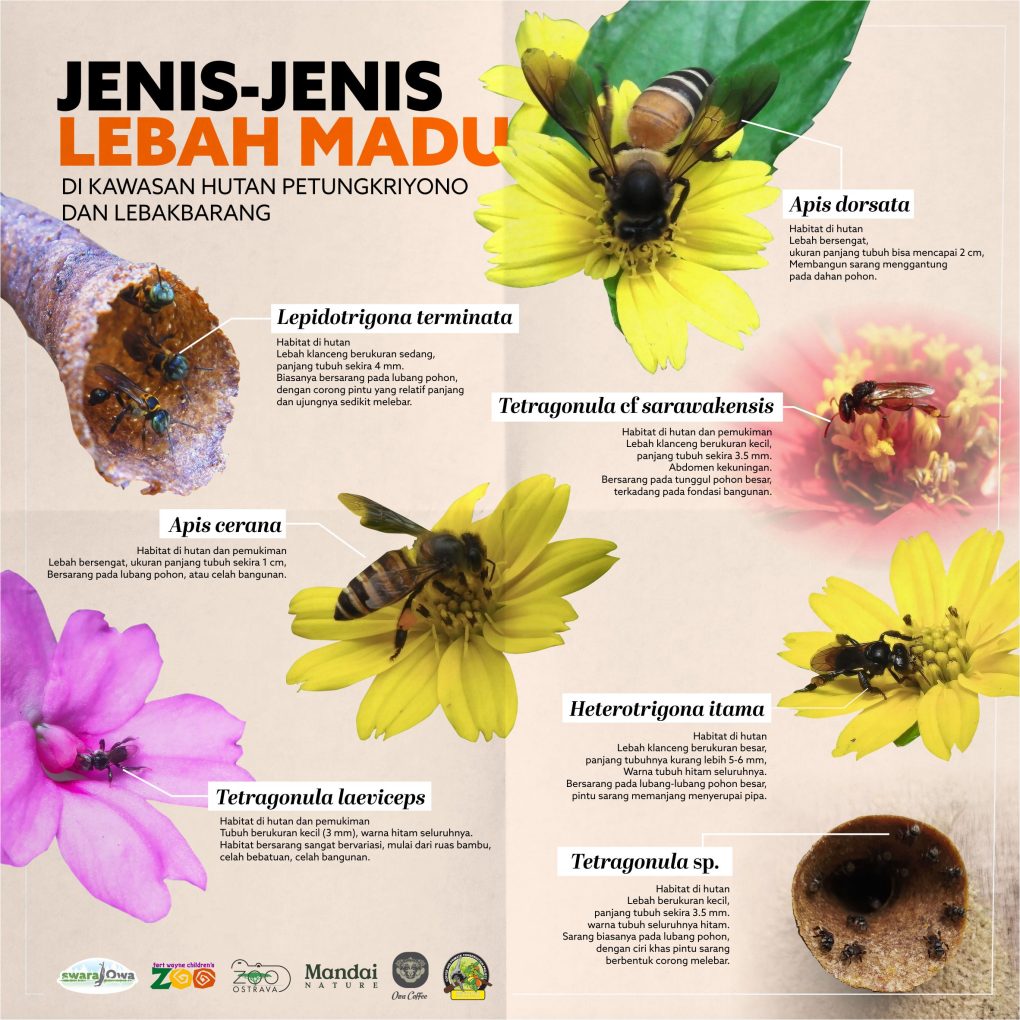Focussing especially on Pekalongan regency, Central Java Province, Indonesia, our work to conserve the Javan gibbon (Hylobates moloch) mainly aims to support the sustainable production and marketing of coffee grown in the shade of forest trees (i.e. coffee agroforestry). However, since 2017, we have also launched a project that makes use of bees in the area to build and strengthen local livelihoods.
The SwaraOwa team’s very own bee specialist, Sidiq Harjanto, started this project by first compiling a list of the species of bees found in the Sokokembang forest. He then did fieldwork at selected sites with different habitat types and altitudes to find out which species were present where. At the same time, he also researched which activities locals were already engaging in that related to bees. One of these, the harvesting of honey in the dry season, proved an interesting tradition to study and develop for sustainable use. In February 2017, we published a brief report detailing which species of bees were found in the area (read here). We concurrently started conceptualising projects to cultivate these bees. These projects centred around several villages near the forest habitat of the Javan gibbon, in Sokokembang, Tinalum, involving several species of stingless bees and the stinging bee Apis cerana in Setipis hamlet. All of these sites are in the Petungkriyono sub-district.
Because Javan gibbons inhabit the forests of the Lebakbarang sub-district, Mendolo village has become one of the focal points of our beekeeping project focused on stingless bees. One of the more important stingless bee species there is Heterotrigona itama, popular for its high yield of honey. To date, several community groups have used these bees for forest-friendly investments that have given them bountiful returns.
Beekeeping in and around the forest takes up a minimal amount of land, because it can be done in conjunction with forestry or agricultural activities in general. Unlike other livestock, bees can find their own food. The forest keeps them well supplied with nectar and pollen, which they store in their hives as honey and beeswax. By tirelessly visiting flowers, bees help to pollinate plants. It has been shown that in this, bees and other pollinating insects crucially support the production of fruits and other food crops, as well as help regenerate forests.

One thought on “Honey Bees in the forest habitat of the Javan gibbon”